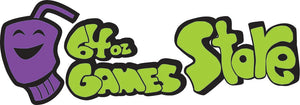Quirkle Rules
Quirkle
Mix, Match, Score and Win!
2 to 4 Players • Ages 6 and up
Contents
108 tiles, three of each tile shown at right
Playing Time
30 - 60 minutes
Object
Make lines of tiles that are either all one color or all one shape. Points are scored for every tile played. The player with the most points wins the game.
Setup
Use a pencil and paper to keep score.
Place all tiles in the bag.
Starting the Game:
Each player draws six tiles to create his or her hand. Stand the tiles so that only you can see the printed side. Players declare the largest number of tiles in their hand that are all one shape or all one color. Do not include duplicate tiles.
The player with the most matching tiles (not including duplicates) plays those tiles to start the game. If there is a tie, the oldest player in the tie starts the game. Play proceeds clockwise.
Playing the Game
On your turn:
1. Place one or more tiles.
2. Tally your score.
3. Draw tiles from the bag to bring your hand back up to six.
If you can't or don't want to place tiles, you may discard Instead. This counts as your entire turn and you do not score any points. Set aside all the tiles you want to discard, then draw the same number of replacement tiles. You cannot discard more tiles than are in the bag. After you have drawn, mix the discarded tiles back into the bag.
Placing Tiles
You may play multiple tiles on your turn as long as all tiles played are the same color or the same shape and are placed in the same line. You cannot play two tiles that are exactly the same.
At least one of the tiles you play must touch (side to side) a tile that has already been played and match the tile in color or shape. Any tiles that touch each other are part of a line. Lines are either all one shape or all one color, without any duplicates.
A blue square and a yellow square can be added to the opening move to create a line of squares.
The tiles you play must be added to the same line, but they do not have to touch each other.
You can add a tile to both ends of a line in one tum.
There cannot be duplicate tiles in a line. For example, a line of squares can only have one blue square. A line can never be longer than six tiles.
As the game progresses, spaces will be created where no tile can be played.
For more examples of tile placement, refer to the Sample Game on the back of these instructions.
Scoring
One point is scored for each tile in a line that you create or add to.
A single tile can score two points if it is part of two lines.
Whenever you complete a line of all six colors or shapes, it is called a Qwirkle. A Qwirkle scores 12 points, six for the tiles in the line plus six bonus points.
A six-point bonus is scored by the first player to run out of tiles.
For more scoring examples, refer to the Sample Game on the back of these instructions.
Ending the Game
When there are no more tiles to draw, play continues as before, but players do not replenish their hands. The first player to run out of tiles scores six bonus points and ends the game. The player with the highest score wins.
Strategy Tips
Play your tiles so that they are part of more than one line.
Save tiles that can help you make a Qwirkle.
Avoid creating places for other players to make a Qwirkle. Remember that there are three of each type of tile.
